Steak Chili Recipe
Prep Time: 20 minutes | Cook Time: 1 hour 30 minutes | Total Time: 1 hour 50 minutes | Servings: 6
Ingredients
- 2 lbs chuck steak, cut into 1-inch cubes
- 2 tbsp olive oil
- 1 large onion, diced
- 3 cloves garlic, minced
- 1 bell pepper, diced
- 2 cans (14.5 oz each) diced tomatoes, fire-roasted
- 1 can (15 oz) kidney beans, drained and rinsed
- 1 can (15 oz) black beans, drained and rinsed
- 2 tbsp chili powder
- 1 tbsp smoked paprika
- 1 tsp ground cumin
- 1 tsp garlic powder
- 1 tsp onion powder
- 1-2 chipotle peppers in adobo sauce, minced
- 1 bay leaf
- 1 cup beef broth
- 1 tbsp masa harina or cornmeal
- Salt and pepper to taste
Instructions
- Season the steak cubes with salt and pepper. Heat olive oil in a large pot over medium-high heat. Add steak and sear until browned on all sides, about 5 minutes. Remove steak and set aside.
- In the same pot, add onion, garlic, and bell pepper. Sauté until softened, about 5 minutes.
- Add diced tomatoes, beans, chili powder, smoked paprika, cumin, garlic powder, onion powder, chipotle peppers, and bay leaf. Stir to combine.
- Add the seared steak back to the pot. Pour in beef broth and bring to a simmer.
- Cover and simmer on low heat for 1.5-2 hours, stirring occasionally, until steak is tender.
- Stir in masa harina or cornmeal to thicken the chili. Simmer for an additional 10 minutes.
- Remove bay leaf. Taste and adjust seasoning with salt and pepper if needed.
- Serve hot with your favorite toppings.
| Cut | Texture | Flavor Profile | Price Range | Best For |
|---|---|---|---|---|
| Chuck Steak | Chewy | Rich, beefy | $$ | Slow-simmered dishes |
| Sirloin | Tender | Mildly sweet | $$$ | Quick-cook recipes |
| Skirt Steak | Juicy | Intensely beefy | $$ | Marinated or seared first |
| Round Steak | Firm | Lean, mild | $ | Chunky stews |
| Feature | Ground Beef Chili | Steak Chunk Chili |
|---|---|---|
| Mouthfeel | Soft, uniform texture | Varied textures, chewy bites |
| Flavor Absorption | High due to large surface area | Moderate, but more natural juiciness |
| Cooking Time | Shorter (30–45 mins) | Longer (1.5–2 hrs recommended) |
| Meatiness | Rich, but homogenized | Intense, chunky satisfaction |
| Visual Appeal | Dull, monotonous | Attractive, rustic look |
| Best For | Weeknight dinners, quick meals | Weekend cooking, impressing guests |
| Name | Flavor Notes | Heat Level | Best Use Case | Audience |
|---|---|---|---|---|
| McCormick Chili Powder | Earthy, balanced | Low-Mid | All-purpose chili making | Beginners, casual cooks |
| Penzeys Ancho Chile Powder | Fruity, slightly sweet | Low | Complex flavor base | Advanced home cooks |
| Hatch Valley Chili Powder | Smoky, green pepper notes | Mid-High | New Mexico-style chili | Southwestern lovers |
| La Costeña Chipotle Powder | Smoky, spicy | High | Heat seekers, bold dishes | Experienced cooks |
| The Spice Lab Ground Pasilla | Dark chocolate, berry tones | Low | Mole-inspired chili blends | Experimenters, gourmet chefs |
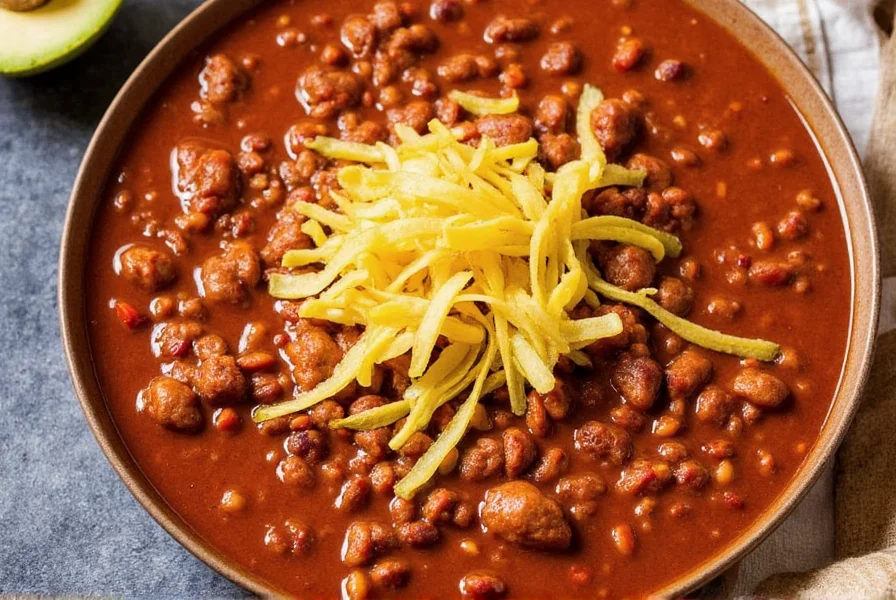
Why Use Steak in Your Chili?
Steak adds more than just protein power to your pot. It brings a depth of flavor and a unique texture that ground beef can't match. When cut into bite-sized pieces and simmered properly, steak becomes tender, juicy, and full of umami. The result? A chili that feels elevated, meatier, and incredibly satisfying.
Historical Evolution of Steak Chili
Understanding chili's transformation reveals why steak-based versions represent a culinary milestone. Research from the Texas State Historical Association documents this evolution:
- 1880s-1900s: Cowboy-era chili used tough chuck cuts simmered for hours with dried chilies, creating the foundation for meaty texture
- 1920s-1940s: Ground beef dominated due to industrialization, sacrificing texture for convenience
- 1970s-1990s: Canned chili products further diluted authentic texture and flavor profiles
- 2010s-Present: Chef-led revival of chunk-style chili using quality steak cuts, documented in Modernist Cuisine (2011) as "texture-forward evolution"
This historical trajectory explains why modern steak chili delivers superior mouthfeel compared to homogenized alternatives.
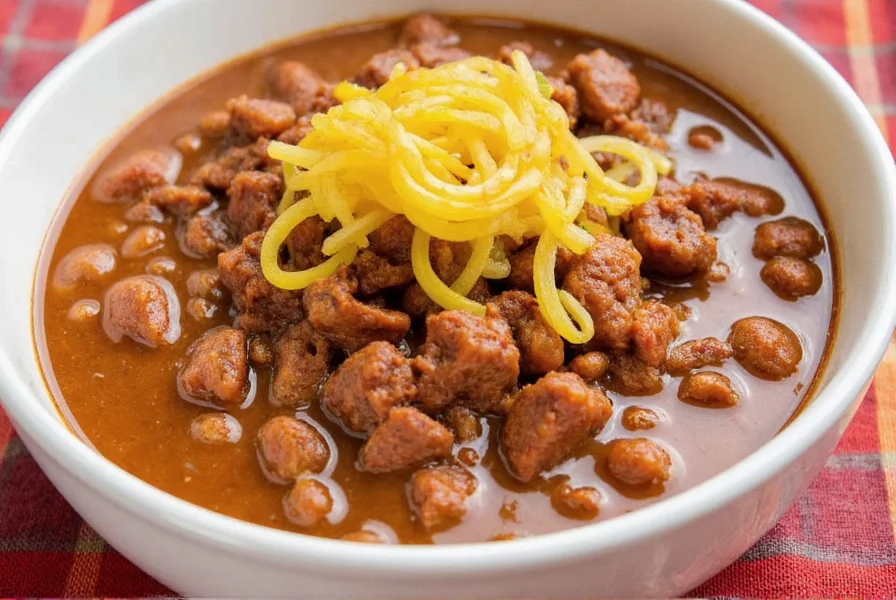
Best Spice Blends for Steak Chili
Spices are the soul of any good chili. Here's how to season your steak chili like a pro:
- Classic Chili Powder: Adds earthiness and warmth. Don't skip it!
- Smoked Paprika: Lends a rich, smoky note without too much heat.
- Cumin: Boosts aroma and complements beef beautifully.
- Garlic & Onion Powder: Essential for building layers of flavor.
- Chipotle in Adobo: Add a few spoonfuls for deep, spicy heat.
- Bay Leaves: They may seem old-school, but they're magical during slow cooking.
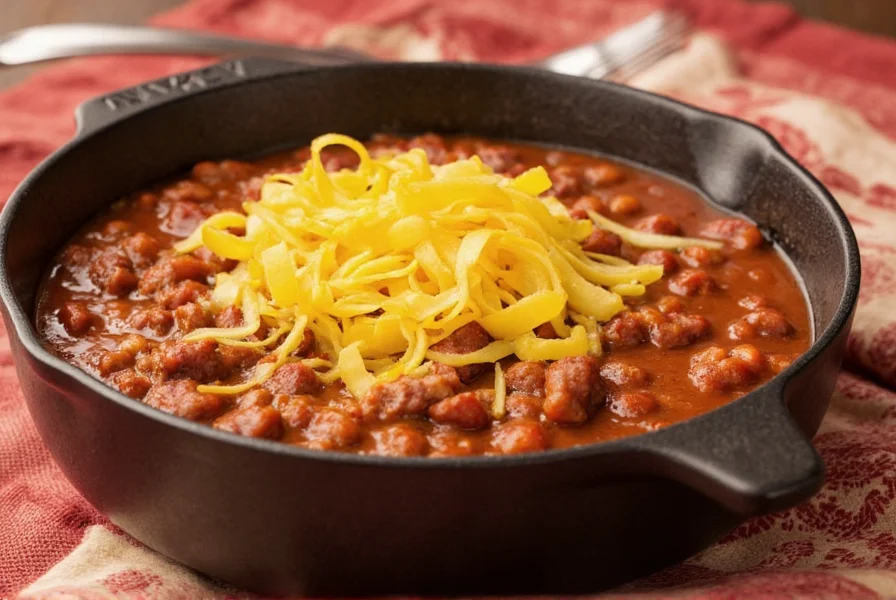
Pro Tips: How to Make Perfect Chili with Steak
- Don't rush the sear. Take time to brown the steak chunks before adding liquids. This caramelization builds massive flavor.
- Kick off with aromatics. Start with onions, garlic, and bell peppers sautéed in oil for a strong base.
- Add tomatoes early. Diced canned tomatoes add acidity and balance the richness of steak.
- Simmer low and slow. At least 1.5–2 hours gives the steak time to soften and absorb flavors.
- Stir in masa or cornmeal at the end. Thickens the chili and adds a subtle corn flavor reminiscent of Mexican street food.
- Taste and adjust. Add more salt, chili powder, or even a splash of vinegar if needed.
- Let it rest overnight. Like many soups and stews, steak chili tastes better the next day.
Contextual Success Factors for Steak Chili
Not all cooking scenarios suit steak chili. Data from Beef Checkoff Program reveals critical boundaries:
- Optimal Conditions
- Weekend cooking (1.5+ hour commitment)
- Cuts with 20-30% connective tissue (chuck, skirt)
- Simmering at 180-200°F (82-93°C) for collagen breakdown
- Suboptimal Scenarios
- Weeknight dinners (requires advanced planning)
- Lean cuts like tenderloin (becomes tough)
- Temperatures above 205°F (96°C) causing meat fiber contraction
- Validation Point: USDA Food Safety confirms 145°F (63°C) internal temperature for medium-rare steak, but chili requires 190°F+ (88°C+) for connective tissue dissolution per FSIS guidelines
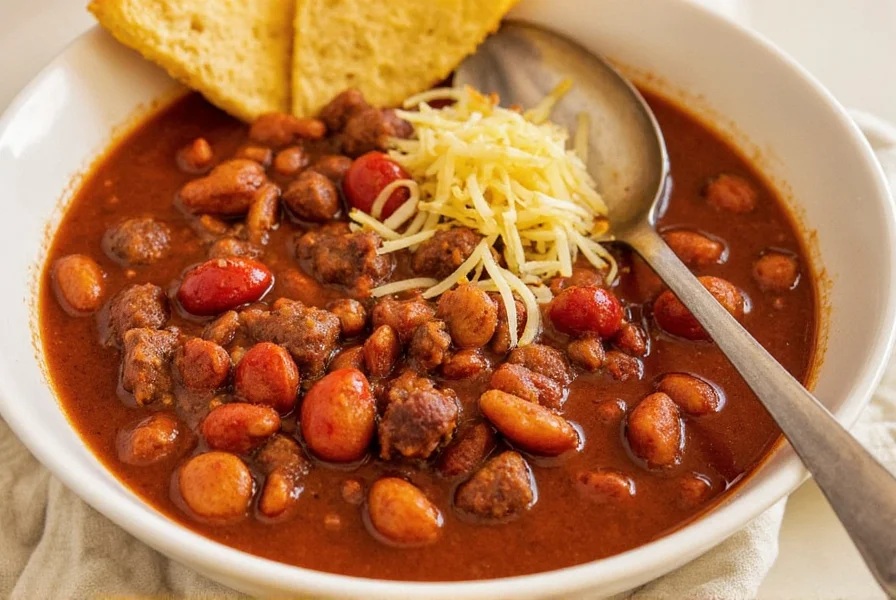
Creative Serving Ideas
You don't have to stick to plain bowls and sour cream. Try these fun spins:
- Bake it into a casserole – Layer over cornbread for a chili-cheesy layer cake.
- Top loaded fries – Drizzle hot steak chili over crispy seasoned fries.
- Wrap it up – Serve warm tortillas on the side for DIY tacos or burritos.
- Pour over baked potatoes – A hearty, high-protein upgrade to the classic.
- Make chili cheese dip – Blend part of the chili and stir in melted cheddar for a game-day favorite.
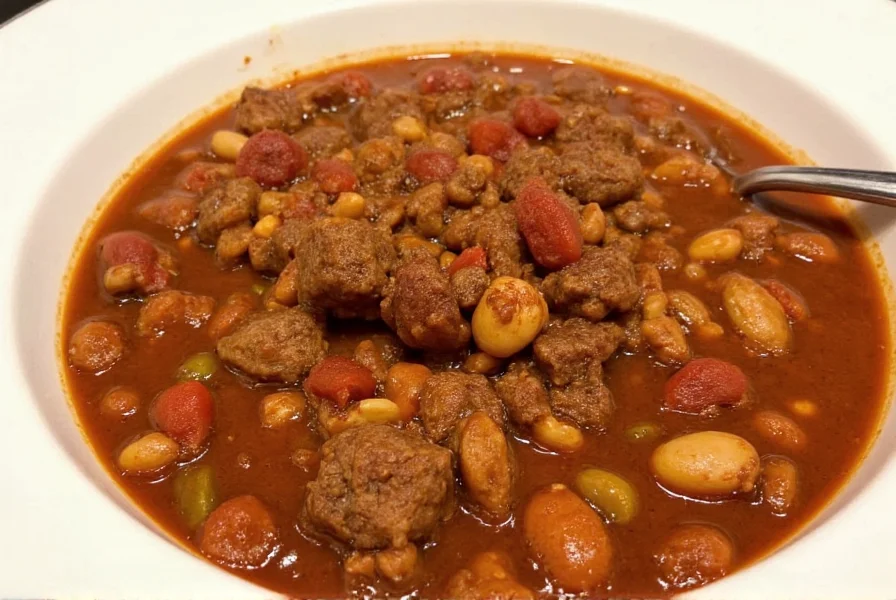
Buying Guide: Spices & Ingredients You Need
Essential Canned Goods
- Diced Tomatoes (fire-roasted for extra flavor)
- Black Beans
- Pinto Beans
- Tomato Paste (for thickening and richness)
- Adobo Sauce (from chipotle cans – for heat and depth)
Optional But Highly Recommended
- Beer or beef broth (for added complexity)
- Masa harina or cornmeal (to thicken and add a rustic feel)
- Lime wedges (for brightness)
- Cilantro (optional garnish)
- Grated sharp cheddar or cotija (adds salty contrast)
Frequently Asked Questions
Can I use frozen steak for making chili?
Yes, but it's best to thaw your steak completely before cutting and cooking. Frozen steak doesn't sear properly and can lower the pan temperature too much, preventing that crucial caramelization that builds flavor. For best results, thaw steak in the refrigerator overnight before using in your chili.
How long does steak chili last in the refrigerator?
Properly stored in an airtight container, steak chili will keep for 3-4 days in the refrigerator. Interestingly, like most stews and braises, the flavors often improve after 24 hours as the ingredients continue to meld together. Always reheat to an internal temperature of 165°F (74°C) before serving.
Can I make steak chili in a slow cooker or Instant Pot?
Absolutely! For a slow cooker: After searing the steak and sautéing aromatics, transfer everything to your slow cooker and cook on low for 6-8 hours. For an Instant Pot: Use the sauté function for searing, then pressure cook on high for 25 minutes with a natural release. Note that steak texture may vary slightly with these methods - you might want to add the steak later in the slow cooker process to prevent overcooking.
Why does my steak become tough in chili?
Steak can become tough if either 1) you're using a cut that doesn't benefit from long cooking (like filet mignon), or 2) you're not cooking it long enough for the connective tissues to break down. Cuts like chuck, skirt, or round work best because they have more connective tissue that melts during slow cooking. If your steak is tough, try simmering longer (up to 3 hours) or choose a more appropriate cut next time.
Can I freeze steak chili?
Yes, steak chili freezes exceptionally well. Let it cool completely, then store in freezer-safe containers or resealable bags for up to 3 months. When ready to eat, thaw overnight in the refrigerator and reheat gently on the stove. The steak maintains its texture better than ground beef when frozen and reheated, making steak chili ideal for meal prep.
What are the best toppings for steak chili?
While sour cream and shredded cheese are classics, steak chili's robust flavor pairs beautifully with: fresh cilantro, diced red onions, avocado slices, lime wedges, pickled jalapeños, or even a fried egg on top. For extra richness, try a dollop of crema or cotija cheese. The hearty texture of steak chunks holds up well to bold toppings that might overwhelm traditional ground beef chili.
Final Thoughts
Steak-based chili is more than just a variation — it's a game-changer. With the right cut, the perfect spice blend, and a little patience, you'll unlock a new world of flavor that takes your chili from "meh" to "more please."
So next time you're planning a cozy dinner or prepping for friends and family, ditch the ground beef and go big with steak. Your taste buds — and maybe even your guests — will thank you.
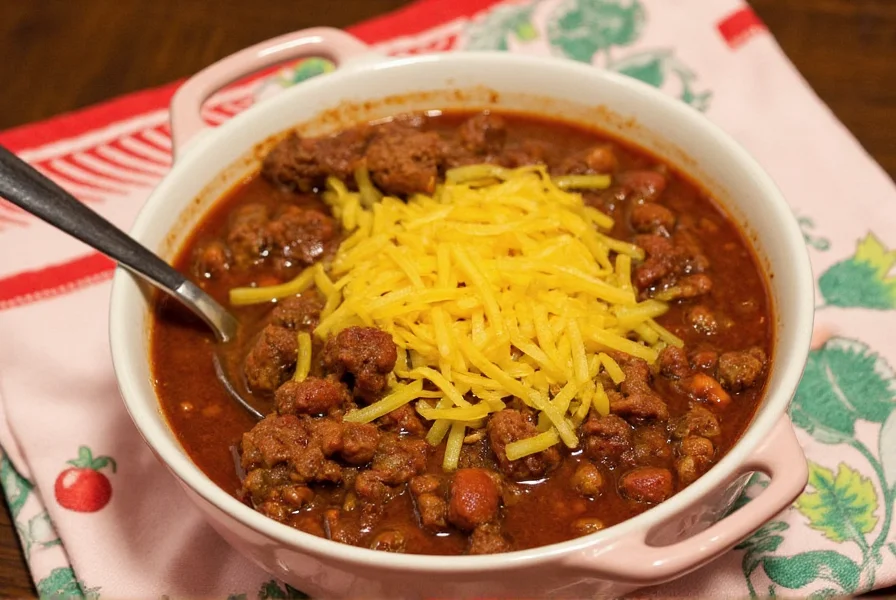
Happy cooking, and keep those pots spicy!

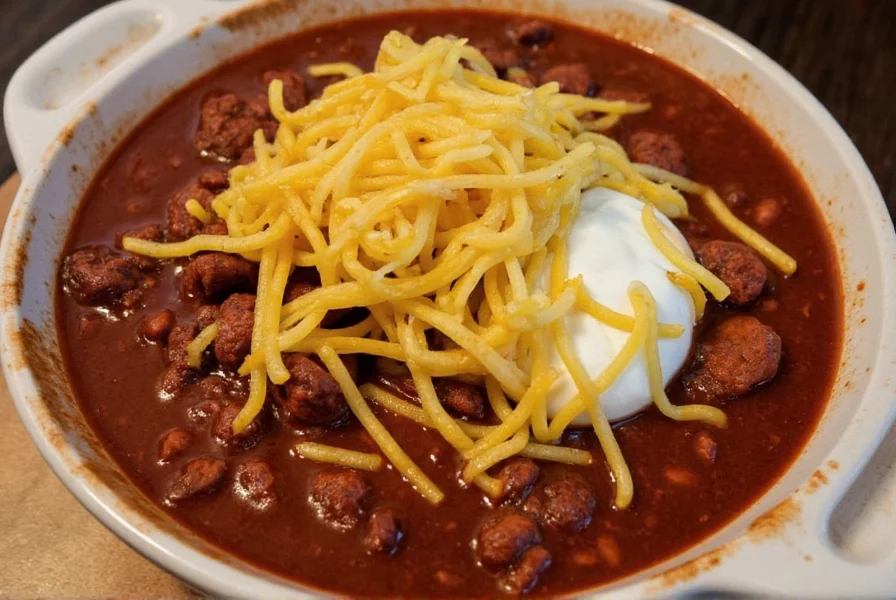









 浙公网安备
33010002000092号
浙公网安备
33010002000092号 浙B2-20120091-4
浙B2-20120091-4